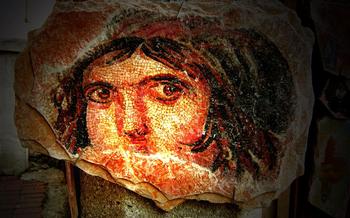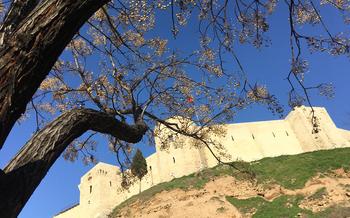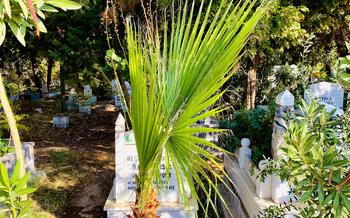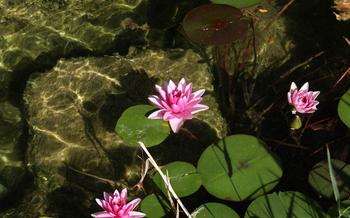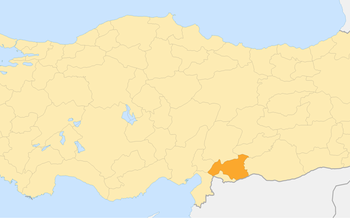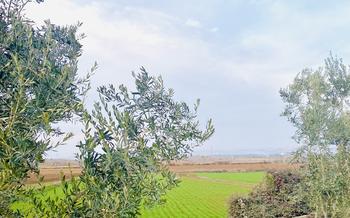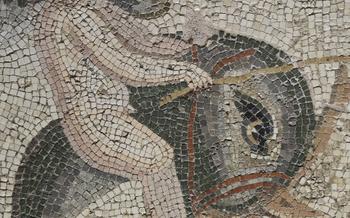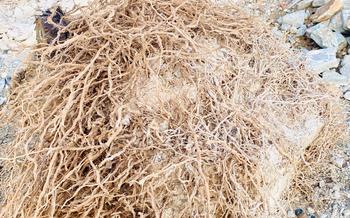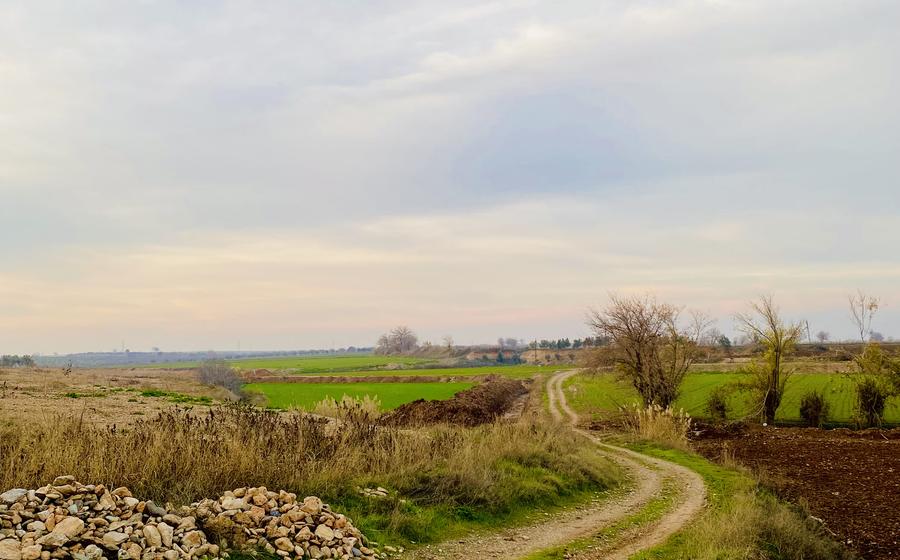
Nizip Soap Museum
- Historical Background
- Getting There
- Exploring the Museum: A Journey Through Soap-Making History
- Types of Soap
- Production Process
- Soap Bazaar
- Cultural Significance
- Economic Importance
- Environmental Impact
- Health Benefits
- Interactive Workshops
- Shopping Tips
- Photography Opportunities
Historical Background
Gaziantep, a city in southeastern Turkey, has a rich history of soapmaking dating back centuries. The city's unique alkaline water source, combined with the abundance of olive oil in the region, created ideal conditions for soap production. Over time, Gaziantep became renowned for its high-quality soap, and the city's soapmakers developed a distinct style and techniques that set their products apart.
The Nizip Soap Museum, established in 2011, stands as a testament to this rich heritage. Housed in a restored historical building, the museum showcases the history, culture, and traditions of soapmaking in Gaziantep. Visitors can explore interactive exhibits, traditional tools and machinery, and historical photographs and documents that provide a glimpse into the world of soapmaking in the region.
Getting There
The Nizip Soap Museum is conveniently located in the heart of Nizip, a charming town situated approximately 50 kilometers from Gaziantep city. To reach the museum, visitors can either opt for a scenic bus journey or rent a car for a more flexible experience. Guided tours are also available for those who prefer a comprehensive and informative visit, with knowledgeable guides providing insights into the history and significance of soap-making in the region.
To make the most of your visit, allocate at least two to three hours to thoroughly explore the museum's exhibits and participate in any workshops or demonstrations that may be offered on the day. The museum's opening hours vary depending on the season, so it's advisable to check the official website or contact the museum directly for up-to-date information.
Exploring the Museum: A Journey Through Soap-Making History
Step inside the Nizip Soap Museum, and embark on a journey through time, where the art of soap-making comes to life. Interactive exhibits captivate visitors with a vivid portrayal of the soap-making process, from the initial preparation of oils to the final cutting and packaging. Traditional tools and machinery, meticulously preserved, tell the story of generations of soapmakers who have honed their craft over centuries.
Historical photographs and documents provide a rich context, showcasing the evolution of soap-making techniques and the significance of Nizip's unique alkaline water source. Workshops and demonstrations conducted by skilled artisans offer a hands-on experience, allowing visitors to create their own soap using traditional methods. The museum's immersive exhibits and interactive elements make it a truly engaging and educational experience for visitors of all ages.
Types of Soap
The Nizip Soap Museum primarily focuses on Aleppo soap, a renowned type of soap with a rich history and cultural significance. Aleppo soap is characterized by its mild and gentle properties, making it suitable for all skin types, including sensitive skin. It is traditionally made using olive oil and laurel oil, which gives it a distinctive green color. The museum showcases various types of Aleppo soap, including variations made with different oils, such as black seed oil.
Aleppo soap is not only known for its cleansing properties but also for its potential medicinal benefits. It has antibacterial and antifungal qualities, making it effective in treating skin conditions like eczema and psoriasis. The soap's natural ingredients and mild pH level make it gentle on the skin, reducing irritation and promoting healing.
In addition to traditional Aleppo soap, the museum also exhibits modern adaptations and innovations in soap-making. Visitors can learn about the use of different oils and additives to create soaps with unique properties and fragrances. The museum's collection highlights the diversity and creativity of soap-making as an art form.
Production Process
The traditional soap-making process in Nizip, showcased at the museum, involves several key steps. Firstly, the oils, typically olive oil, are prepared and mixed with water. This mixture is then heated in large cauldrons until the water evaporates, leaving behind a thick paste. The paste is then transferred to smaller pots, where it is mixed with a strong alkaline solution made from the unique alkaline water of Nizip. This mixture undergoes a chemical reaction called saponification, which results in the formation of soap and glycerin.
The resulting mixture is left to settle for several days, allowing the soap to rise to the surface. The soap is then skimmed off and cut into bars, which are then stamped with the museum's logo. These bars are then left to cure for several months, during which they harden and develop their characteristic mild and gentle properties.
The traditional soap-making process in Nizip is not only unique but also sustainable. The use of natural ingredients and the absence of harsh chemicals make it an environmentally friendly process. Additionally, the soap is biodegradable, further reducing its environmental impact.
Soap Bazaar
Adjacent to the Nizip Soap Museum lies a bustling soap bazaar, a haven for soap enthusiasts and a testament to the thriving soap-making tradition in Gaziantep. Here, visitors can immerse themselves in a vibrant marketplace showcasing a vast array of locally produced soaps, each handcrafted with care and precision.
The air is perfumed with the heady scents of laurel, olive, and black seed oil, enticing visitors to explore the diverse offerings of Aleppo soap. From traditional bar soaps to intricate decorative pieces, the bazaar presents a kaleidoscope of colors and textures.
While perusing the stalls, be sure to engage with the friendly vendors, who are more than happy to share their knowledge about the unique properties of each soap. Don't hesitate to ask questions, learn about the soap-making process, and discover the stories behind each handcrafted bar.
When it comes to bargaining, embrace the local customs and don't be afraid to negotiate prices. While it's customary to haggle, always do so respectfully and with a smile. Remember, bargaining is a way of showing interest in the product and building a connection with the vendor.
As you make your purchases, keep in mind the delicate nature of soap products. Pack them carefully using bubble wrap or soft tissue paper to ensure they remain intact during your travels.
Whether you're seeking a unique souvenir or simply looking to stock up on high-quality, natural soap, the Nizip Soap Museum's bazaar is a must-visit destination. Immerse yourself in the vibrant atmosphere, engage with the locals, and discover the treasures that await in this bustling marketplace.
Cultural Significance
Soap-making holds a deep cultural significance in Gaziantep, intertwined with the city's identity and traditions. In Turkish baths and hammams, soap plays a crucial role in the cleansing rituals and purification practices that are integral to Turkish culture. Traditionally, soap was not merely a cleaning agent but also held symbolic meanings and was used in various rituals and ceremonies. For instance, soap was exchanged as a token of friendship or as a gift to celebrate special occasions. Even today, soap-making workshops and demonstrations are often accompanied by traditional music and storytelling, showcasing the deep cultural roots of this craft.
Economic Importance
Soap-making has been a significant source of livelihood for local communities in Gaziantep for centuries, contributing to the economic prosperity of the region. The Nizip Soap Museum plays a vital role in preserving and promoting this traditional craft, attracting tourists from around the world. The museum's popularity has led to increased sales of locally produced soap, benefiting both individual soap makers and the local economy as a whole.
The Turkish government recognizes the importance of traditional crafts like soap-making and provides support for their preservation and promotion. This support includes funding for museums like the Nizip Soap Museum, as well as initiatives to train young people in traditional soap-making techniques. By preserving and promoting traditional soap-making, the government aims to create sustainable economic opportunities for local communities while safeguarding Turkey's rich cultural heritage.
The economic benefits of traditional soap-making extend beyond the local level. Sustainable soap-making practices, such as those employed in the production of Aleppo soap, have a positive impact on the environment. The use of natural ingredients and the low environmental impact of traditional methods make Aleppo soap an attractive alternative to mass-produced soaps, which often contain harmful chemicals. By supporting traditional soap-making practices, consumers can contribute to the sustainability of the environment while supporting local economies and preserving cultural heritage.
Environmental Impact
The traditional soap-making methods employed in Nizip have a remarkably low environmental impact. The process relies solely on natural ingredients, such as olive oil and lye, eliminating the use of harsh chemicals and synthetic detergents. These natural components are biodegradable and break down easily in the environment, minimizing pollution and preserving water quality. Moreover, the absence of industrial machinery and large-scale production contributes to the sustainability of the process.
In contrast, modern alternatives to traditional soap-making often involve the use of synthetic ingredients, artificial fragrances, and chemical additives. These substances can be harmful to the environment, as they may not be easily biodegradable and can contribute to water pollution. Furthermore, mass production techniques employed in modern soap industries often result in higher energy consumption and waste generation.
Recognizing the importance of preserving the environment, the Nizip Soap Museum has adopted sustainable practices in its operations. The museum utilizes solar energy to power its facilities, reducing its carbon footprint. Additionally, the wastewater generated during the soap-making process is treated and reused for irrigation purposes, ensuring efficient water management.
By embracing traditional soap-making methods and incorporating sustainable practices, the Nizip Soap Museum not only preserves cultural heritage but also contributes to environmental protection. Visitors to the museum can feel confident that their purchases support sustainable practices and contribute to a healthier environment.
Health Benefits
Aleppo soap, the primary focus of the Nizip Soap Museum, is renowned for its mild and gentle properties, making it suitable for all skin types, even the most sensitive. Its hypoallergenic nature reduces the risk of irritation and allergic reactions. Additionally, Aleppo soap possesses antibacterial and antifungal qualities, making it effective in combating skin conditions such as eczema and psoriasis. The combination of natural ingredients, including olive oil and laurel oil, provides a deep cleansing and moisturizing effect, leaving the skin feeling soft, smooth, and healthy.
Interactive Workshops
Enrich your visit to the Nizip Soap Museum by participating in one of their engaging soap-making workshops. Under the guidance of skilled artisans, you'll embark on a hands-on journey into the art of soap crafting. Learn about the traditional techniques passed down through generations and try your hand at creating your own unique soap bar.
The workshops are designed for both beginners and experienced soap makers, providing a fun and educational experience for all. You'll be guided through each step of the process, from selecting the finest ingredients to mixing, pouring, and cutting the soap. Discover the secrets behind the perfect lather and explore the various natural additives that can enhance the soap's properties.
Whether you're a seasoned soap enthusiast or simply looking for a unique and immersive experience, these workshops offer a wonderful opportunity to connect with the heritage of soap-making in Gaziantep. Take home your handcrafted soap as a cherished reminder of your time at the Nizip Soap Museum.
Shopping Tips
When shopping for authentic Aleppo soap at the Nizip Soap Museum, there are a few tips to keep in mind. Firstly, look for the traditional cube shape and olive-green color that characterizes Aleppo soap. Secondly, check for the stamp or label of the museum or a reputable soap maker to ensure authenticity.
Bargaining is a common practice in local bazaars, but do so respectfully and within reasonable limits. Start by offering a price slightly lower than the asking price and gradually negotiate until you reach an agreeable point. Be prepared to walk away if the seller is unwilling to compromise.
Within the museum's bazaar, there are several recommended shops and stalls known for their quality products. Ask the museum staff or other visitors for specific recommendations.
When packing and transporting your delicate soap purchases, wrap them individually in soft tissue paper or bubble wrap to prevent damage during travel. Consider using a sturdy container or box to ensure their safety during your journey home.
Photography Opportunities
The Nizip Soap Museum is a visual feast, offering ample opportunities to capture stunning photographs. The museum's exhibits and installations are aesthetically pleasing, with vibrant colors and textures that beg to be photographed. Traditional tools and machinery, with their intricate designs and patina of age, provide unique subjects for photography enthusiasts. The soap products themselves, with their varied shapes, sizes, and colors, create a visually captivating display. Additionally, the museum's staff is usually more than willing to pose for photos, adding a human element to your captures. Remember to be respectful and ask for permission before taking photos of people. Embrace the opportunity to document your visit to this unique museum and share the beauty of traditional soap-making with the world through your lens.
